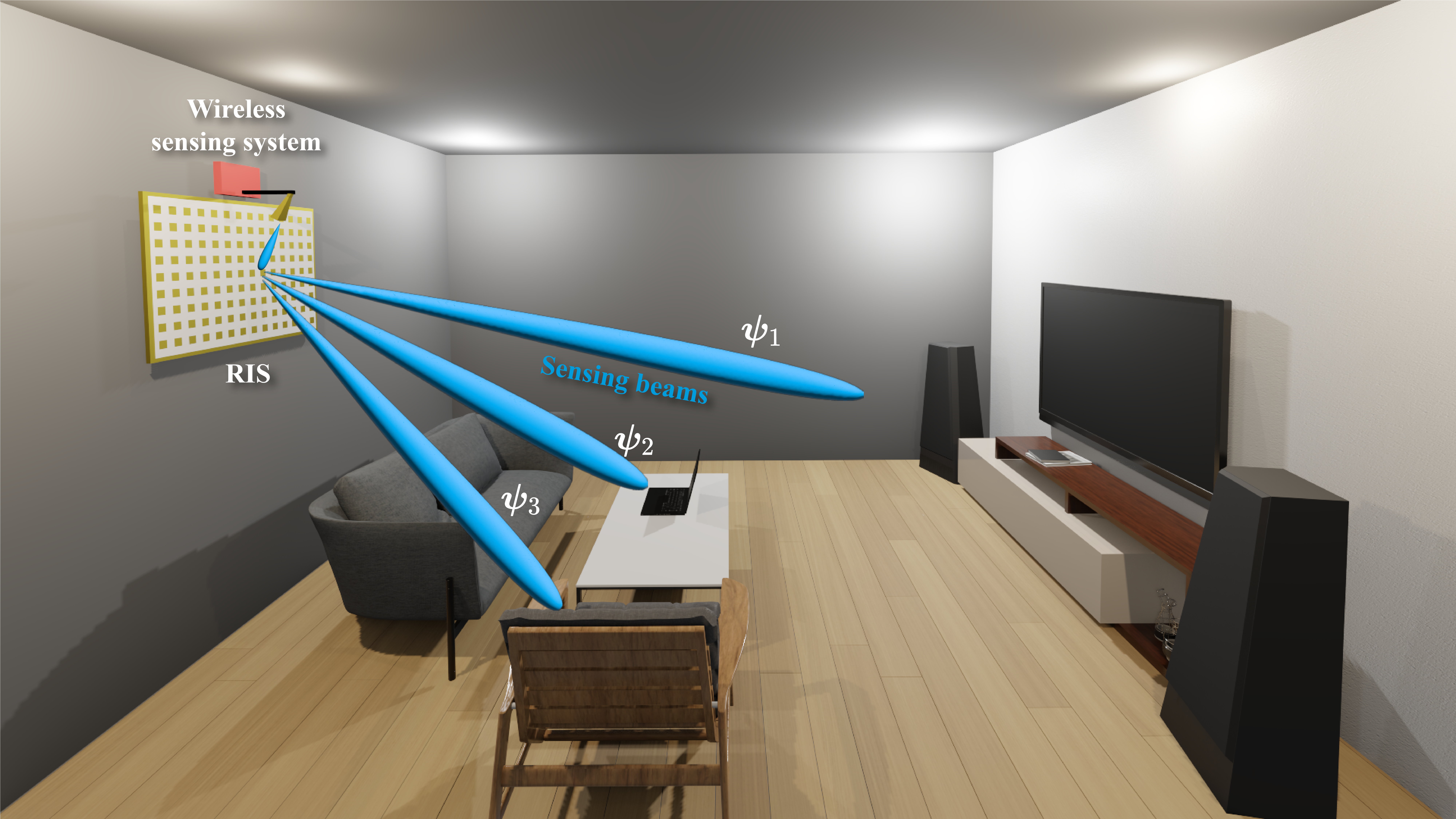Reconfigurable Intelligent Surface Aided Wireless Sensing for Scene Depth Estimation

RIS-Aided Wireless Sensing System: The sensing system adopts a wideband FMCW radar, where the transmitter and the receiver are connected through a self-isolation circuitry to a shared single antenna. The single antenna acts as a feeding antenna that illuminates the RIS for sensing purposes.
Proposed Sensing Process: The sensing signals are transmitted to the RIS through a feeding antenna. Then, the RIS reflects the incident signals to the environment using a sensing codebook. The backscattered/reflected signals are reflected back to the sensing system by the RIS. Finally, the received signals are processed for the sensing purposes.
Key ideas
- Wireless sensing can overcome the limitations of the traditional optical sensors.
- RIS-aided wireless sensing has the potential for realizing high spatial resolution.
- The RIS interaction codebook design can construct a sensing grid of reflected beams
- The post-processing approach can build high-resolution depth maps
Applications
- Integrated sensing and communication in RIS-aided communication systems
- Accurate depth estimation in augmented and virtual reality (AR/VR) and automotive vehicles
More information about this research direction
Abstract: Current scene depth estimation approaches mainly rely on optical sensing, which carries privacy concerns and suffers from estimation ambiguity for distant, shiny, and transparent surfaces/objects. Reconfigurable intelligent surfaces (RISs) provide a path for employing a massive number of antennas using low-cost and energy-efficient architectures. This has the potential for realizing RIS-aided wireless sensing with high spatial resolution. In this paper, we propose to employ RIS-aided wireless sensing systems for scene depth estimation. We develop a comprehensive framework for building accurate depth maps using RIS-aided mmWave sensing systems. In this framework, we propose a new RIS interaction codebook capable of creating a sensing grid of reflected beams that meets the desirable characteristics of efficient scene depth map construction. Using the designed codebook, the received signals are processed to build high-resolution depth maps. Simulation results compare the proposed solution against RGB-based approaches and highlight the promise of adopting RIS-aided mmWave sensing in scene depth perception.
@INPROCEEDINGS{Taha2023,
author={Taha, Abdelrahman and Luo, Hao and Alkhateeb, Ahmed},
booktitle={ICC 2023 – IEEE International Conference on Communications},
title={Reconfigurable Intelligent Surface Aided Wireless Sensing for Scene Depth Estimation},
year={2023},
volume={},
number={},
pages={491-497},
doi={10.1109/ICC45041.2023.10279208}}
To reproduce the results in this paper:
Example: Steps to generate the results in this figure
- Follow the detailed instructions provided in the above GitHub repo.
